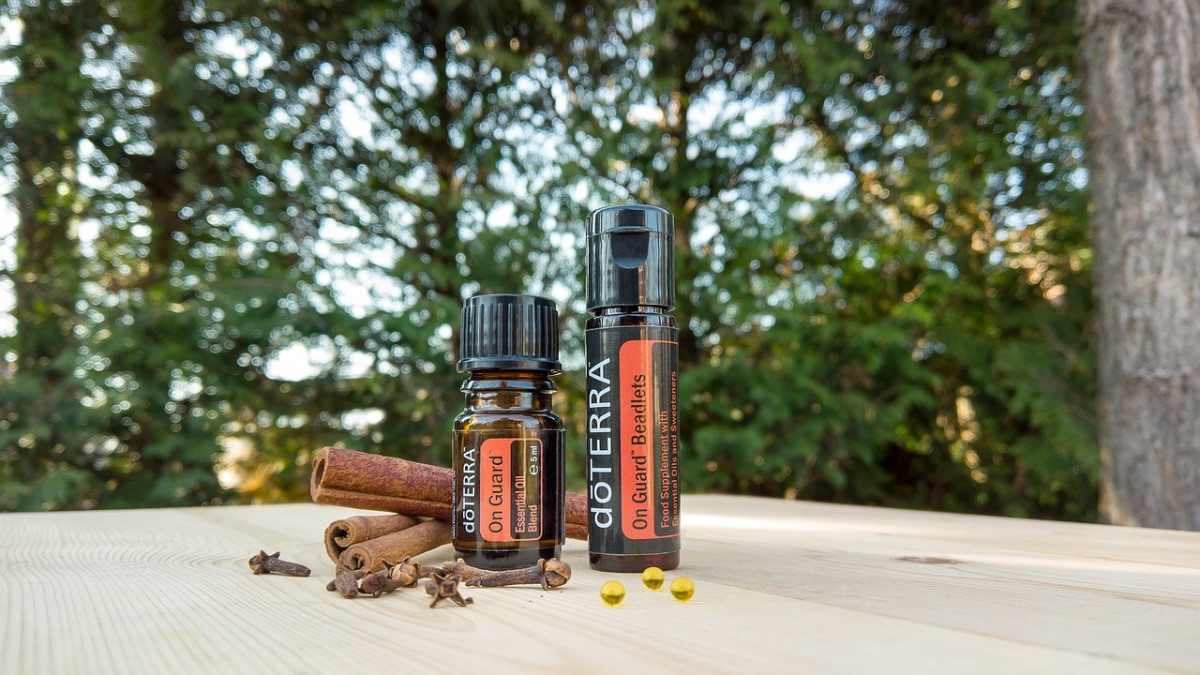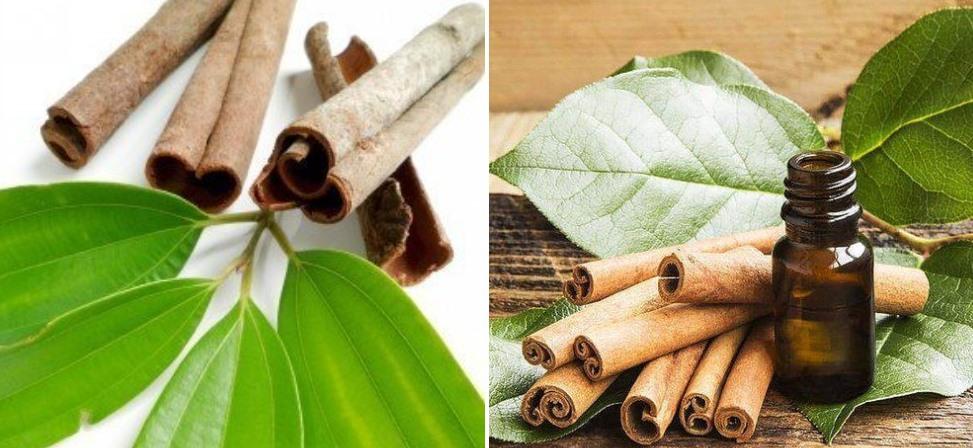Introduction to Cinnamon Oil Project Report, Manufacturing Business Plan: Today, this article will deal with the cinnamon leaf oil extraction methods and steps.
Cinnamon leaf oil is extracted from Cinnamomum verum and is also referred to as true cinnamon tree or Ceylon cinnamon tree belongs to Lauraceae plant family. This Cinnamon tree is small and the bushy tree that is a native tree to Sri Lanka and Southern India, but now cultivated in several countries including Brazil, Vietnam, Egypt, and Indonesia.
The Cinnamon tree can be identified with its small, white flowers with dark green color leaves, having purple oval berries. If the oil is used carefully and in proper quantities, Cinnamon leaf oil is a harmless, natural substitute for beauty, health, and wellness. Cinnamon leaf oil can bother the skin if the dose is more. Cinnamon leaf oil is also known as Dalchini or Kayumanis.
Cinnamon Oil Project Report, Manufacturing Business Plan

Properties and application of Cinnamon leaf oil: Cinnamon leaf oil has a warm, spicy fragrance. It has antiseptic, germicidal, and antifungal properties. It also includes anthelmintic, antidote, anti-diarrheal, antimicrobial, antispasmodic, anti-putrescent, astringent, aphrodisiac, carminative, hemostatic, digestive, orexigenic, parasiticide, spasmolytic, refrigerant, stimulant, stomachic, vermifuge characteristics.
Composition of Cinnamon Oil
The oil obtained from Cinnamon leaves comprises phenols and useful ingredients like eugenol, cinnamic aldehyde, eugenol acetate, Linalool, and benzyl benzoate. It also contains a low amount of cinnamaldehyde, which is an outstanding fragrance and flavoring agent, and the active constituent that can aid to avoid grain storage insects.
Market potential of Cinnamon Oil Manufacturing Business
There has been a wide use of herbal products in the present times due to the increased awareness among individuals about the advantages of Cinnamon oil, which drives the global Cinnamon oil market for its high requirement. But because of the musky, woody, smoky and spicy odor of the Cinnamon oil, there is some hindrance in the market growth. Despite that because of the use of Cinnamon oil in medicine, perfumery, and flavorings has created a high potential for exploring this business.
The global Cinnamon oil market is classified based on application, type, and geography. Based on its type, it is categorized into dark and light Cinnamon oil. The usage is evident in the industries associated with perfumery, flavorings, medicine, and others such as incense, therapeutics, and household. Geographically, Europe, Middle–East, North America, Asia-Pacific, etc. have been using this oil extensively.
Business plan for starting Cinnamon Oil Manufacturing Unit in India
For starting a Cinnamon Oil Manufacturing Business in India, you need to design a perfect business plan by considering the following points:
- Basis and presumptions of the project
- Implementation schedule
- List of approvals required for starting the business
- Raw materials required
- List of machinery and equipment for extracting Cinnamon Oil
- Manufacturing process of Cinnamon Oil
- Project economics of Cinnamon Oil Manufacturing Business
Basis and presumptions of Cinnamon Oil Manufacturing Business
- The Cinnamon Oil plant can be operated in two to three shifts. About 8 hours daily day and 300 working days for a year.
- The interest rate for the business will be 12% per annum on the investment borrowed.
- The expenses regarding acquiring licenses, raw materials, packing materials, machinery and considered based on the scalability of the project profile that differs from place to place.
- The rental expenses of the production shed and land are considered as per the prevailing rates and may differ from place to place.
- The unit capacity utilization could be around 60 – 70% since the unit is operated continuously.
- Recovery of oil from the corn seeds is around 16 – 18% as per the process involved.
Implementation schedule of Cinnamon Oil Manufacturing Business
The project can be executed in and around nine to ten months. The estimated break-up of activities and the duration for each step is given below:
- Project preparation and permissions: 0 – 2nd month
- Registration under MSME Act 2006 and loan sanction: 2nd – 4th month
- Machinery and equipment purchase and installation: 4th – 5th month
- PFA License: 5th – 7th month
- Power connection setup: 5th – 7th month
- Machinery installation: 7th – 8th month
- Recruiting staff and test run: 8th – 9th month
- Commercial production can be assumed to begin: 10th month
List of approvals and permits required to start Cinnamon Oil Manufacturing Business
The first step required to start Cinnamon Oil Manufacturing Business in India is to get the below list of licenses, permissions and registrations –
- Register your business identity
- MSME registration
- GST registration
- ROC
- Get the PAN Card
- Registration of firm
- Shop Act License
- FSSAI License
- IEC Code
- Export License
- Fire and Safety
- ESI
- PF
- No Objection Certificate from pollution board
- Trade license from the local municipal authority
Raw materials required for starting Cinnamon Oil Manufacturing Business
Cinnamon leaves are the major raw materials used for extracting the oil.
Equipment required for starting Cinnamon Oil Manufacturing Business
The essential machinery needed for the extraction of Cinnamon leaf oil is Distillation kettle, insulation layer, material basket, demister, oil and water separator, condensing tower, electrical steam boiler, extracting tank, plate distillation system, vacuum system, digital temperature system.
Manufacturing process of Cinnamon oil
In case if you miss this: Flaxseed Oil Manufacturing Project Report.

Cinnamon leaves are essential raw materials for oil extraction. The leaf oil will be obtained through the steam distillation method. Steam distillation is the perfect method that provides fine-quality oil. Distillation will be performed in three to four hours.
Cinnamon leaf oil obtained is between 0.5% and 1.8%. More than 47 components have been recognized from the leaf oil, the most noteworthy being eugenol, which is around 65 to 92%. Cinnamon leaf oil is less costly than bark oil and it is having applications in the flavor industry, even for flavor confectionery to less extent. It is a good source of eugenol that is used for synthetic vanillin preparation.
Steam distillation method:
Why the steam distillation is preferred? When water is one among the immiscible liquids the process is referred to as steam distillation. It is often useful for purifying liquids that decompose at their normal boiling temperature.
Steam Distillation is the highly famous method used to extract and obtain essential oils from plants and thereby prepare natural products. This is performed when the steam vaporizes the volatile compounds in the plant material, which pass through a condensation setup and are collected further.
In this process, around 100 to 150 grams of mashed Cinnamon sticks are fed into the distillation flask, which has been connected to the steam generator through a glass tube and to a condenser to collect the oil. The essential oils get volatilized at a temperature of 100°C (boiling point of water) for 5-10 hours. The improved mixture will be permitted to settle and the oil was collected. After the steam distillation step, the product will get collected and is separated through a separatory funnel. The essential oils will be aggregated at the bottom layer of the separatory funnel.
The steam distillation process needs water as the solvent obtained should not be a harmful product and must not cause irritation. It will even not provide harmful vapor when released to the environment. Higher temperature makes the solvent evaporate rapidly. Solvent extraction uses ethanol as the solvent having a low boiling point when compared to water and ethanol is a volatile compound. Since the end product is oil, portions of it are stuck to the collection vessel and separator funnel while extraction and during the separating oil from water. Oil has a very high viscosity, so some of the oil is stuck inside the instruments.
While performing extraction, the temperature must be regulated and optimized to 100°C. If the temperature is more, the water could rise and pass through the cooling tube thereby get collected in the collector flask. This affects the product which has been already extracted and the distillation procedure must be done again.
The oil collected will be separated using a separator funnel that is helpful to divide two layers of immiscible liquids like water and oil. The essential oil from Cinnamon leaf has more density than water so it will settle at the bottom of the separatory funnel. Some of the Cinnamon leaf oil will not settle down and oil bubbles are formed at the top and middle of the water later. This is rectified by standing for some time and allow the Cinnamon leaf oil bubbles to sink and the oil to get collected. The procedure for separating the oil is performed many times to ensure no oil is left in the mixture.
Storage of Cinnamon Oil
Keep Cinnamon leaf oil in containers that are tightly packed and should be placed in a cool and dry place, far away from light. If they are stored for greater than 2 years then the quality must be examined.
Cinnamon Oil Project Report/Economics of Manufacturing Cinnamon Oil Business in India
Fixed Capital
- Land and site development: Rs. 1,00,000
- Building and civil works: Rs. 5,00,000
- Plant and machinery: Rs. 15,27,000
- Misc. Fixed Assets: Rs. 1,98,000
- Preliminary and pre-operative expenses: Rs. 2,23,000
- Contingencies and escalation @ 5%: Rs. 1,16,000
- Working capital: Rs. 1,15,000
- Total: Rs. 27,79,000
Working Capital
- Raw Materials: Rs. 88,000
- Power and Utility: Rs. 10,000
- Salaries: Rs. 74,000
- Finished Goods: Rs. 1,34,000
- Receivables: Rs. 1,49,000
- Total: Rs. 4,58,000
Total cost of Cinnamon Oil Manufacturing Business
Fixed Capital + Working capital = Rs. 27,79,000 + Rs. 4,58,000 = Rs. 32,37,000.
Income per annum in Cinnamon Oil Manufacturing Business
Total income per annum: Rs. 36,25,000.
Profit in Cinnamon Oil Small-scale Production Unit
Profit = Total Cost – Total Income = Rs. 36,25,000 – Rs. 32,37,000 = Rs. 3,88,000.
Approximately you can expect 4 lakhs as the profit amount. Your profitability increases year by year, but it depends upon the quality of the oil you produce.
- Handicraft Making at Home: A Small Profitable Business Idea
- Pet-Tech Startups: Innovations for Animal Lovers
- Tech Repair Services: Meeting the Demand for Gadget Maintenance
- Maximizing Rewards: Smart Credit Card Habits for Cashback and Points
- Ultimate Guide to Making Money from Goat Milk Business
- How to Start an Agricultural Value Added Product Business
- Value-Added Business Ideas for Greenhouse: The Best Ways to Make Profits with Greenhouse Farming
- How to Make Profits with Organic Country Chicken: Best Strategies for Beginners
- 10 Value-added Business Ideas for Millets: Low-investment and Highly Profitable
- Why Cleaning Service Business Becoming More Profitable in Metro Cities in India
- 10 Best Businesses to Start in Ayodhya for Profits
- Top Drone Business Ideas in India: Unlocking Aerial Innovation & Opportunities
- Top 10 Service Businesses You Can Start with No Money
- Ultimate Guide to Starting a Home-Based Advertising Agency Business
- Starting a Nail Salon Near Your Location: Check List, Business Plan, Licensing, and Opening Instructions
- Construction Company Name Ideas: Guide to Create New Construction Company Names
- 8 Best Small Businesses to Start in Hyderabad: Low-Cost and Profitable
- 10 Best Small Businesses to Start in Massachusetts: Low-Cost and Profitable
- 10 Best Small Businesses to Start in Maryland: Low-Investment and Profitable
- 10 Best Small Businesses to Start in Delaware: Low-Investment and Profitable
- 10 Best Small Businesses to Start in Connecticut: Low-Investment and Profitable
- Top 10 Best Online Pet Business Ideas: Exploring Cats to Dogs
- 10 Best Small Businesses to Start in Colorado: Low-Investment and Profitable
- Top 10 Profitable Small Business Ideas in California: Low-Investment Tips